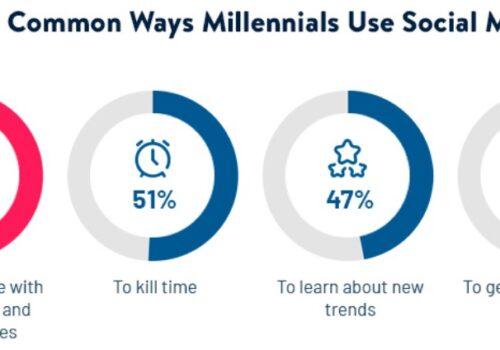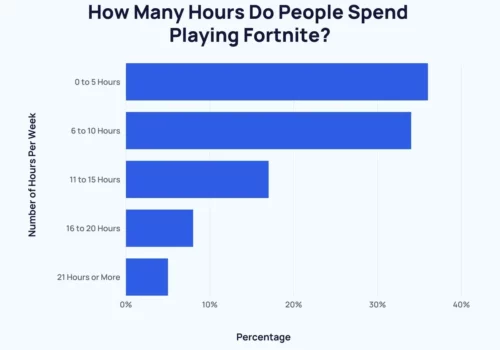Recruitment involves the process of finding and hiring people for available job positions. It is essential for businesses to keep up with the latest recruitment facts and figures.
Find Some interesting statistics about recruitment. These numbers will help us comprehend the current state of the job market.
Whether you’re an individual looking for a job, an employer hiring people, or an HR professional, these stats will provide you with beneficial information about the hiring process.
Let’s explore the world of recruitment statistics and learn what’s happening in the job market today.
Recruitment Statistics 2024
Source: Pexels
- Enhancing caliber of hire (52%), enhancing retention rate (24%), enhancing hiring time (23%), developing the talent pool (22 %), & diversity hiring (22%) are the top five most significant recruiting initiatives.
- Eighty percent of the leading recruitment firms have offices in various countries.
- Recruiters use references to screen candidates in eight out of ten cases.
- 62% of companies and 86% of recruiting managers say the job market is candidate-driven.
- 84% of employers recruit via social media, with a 20% hiring cost reduction through AI.
- 14% have been hired via Instagram.
- 70% of the global workforce is passive talent.
- By 2025, millennials will be 75% of the workforce; 25% are job hoppers.
- 75% of HR uses structured interviews; onboarding boosts retention by 82%.
- 83% of companies report positive remote work experiences.
- 61% of recruiters see video interviews as the future norm.
- 90% of managers expect remote work to persist.
- 95% of employees report stable or improved productivity remotely.
- Remote workers score higher in happiness indices than in-office peers.
- 70% of firms plan to adopt hybrid models.
- 66% of employers are adjusting workspaces for hybrid arrangements.
- By 2025, an estimated 22% of the U.S. workforce will be remote.
Data on Employer Branding & Recruiting
- A company with a good reputation attracts 50% more competent applications.
- Prior to applying for a job, 86% of passive candidates research a company’s brand.
- Company diversity is important to 76% of job searchers.
- If a corporation had a negative image, 75% of Americans just wouldn’t take the job.
- A solid employer brand lowers turnover by 28% and reduces hiring expenses by 50%.
- 84% of employers recruit via social media, with a 20% hiring cost reduction through AI.
- 14% have been hired via Instagram.
- 83% of companies report positive remote work experiences.
- 90% of managers expect remote work to persist.
- Remote workers score higher in happiness indices than in-office peers.
Statistics on Team Member Onboarding
- Almost half of those polled indicated they turned down a job opportunity because of a bad recruiting experience.
- Within 6 months, 31% of new employees have resigned from their new position.
- Approximately 36% of employers give applicants one to three working days for training.
- 75% of HR uses structured interviews; onboarding boosts retention by 82%.
Salary & Perks Stats for Team Members
- Job seekers are prepared to give up to 12% of their annual salary in exchange for more training and flexibility.
- Healthcare insurance (40%) is the most desired benefit, followed by holiday/paid time off (37%, performance incentives (35%), paid sick days (32%), 401k plan/retirement plan/or pension (31%), flexibility in work schedule (30%), & workplace perks (19%).
Data on Workplace Culture
Source: Pexels
- Increased skill testing is seen as a critical aspect of the hiring process by 64% of hiring managers.
- According to 84% of firm recruiters, cultural fit is considered a crucial element in hiring.
- The biggest reason for shifting jobs, as per 25% of respondents, is to improve the workplace culture.
- When it comes to choosing a company, 2/3rds of job searchers believe that having a diverse team is critical.
- 72% of Americans polled said they would or might consider quitting a firm for one with a highly inclusive culture.
- Diversity in executive teams correlates with 33% higher profits; diverse companies are 70% more likely to capture new markets.
Facts and Figures on Job Search
- Employers who don’t offer a mobile-friendly job search experience miss out on 45% of daily applicants.
- Mobile devices are considered important in the job-search process by 89% of job searchers.
- 54% of job candidates check employee feedback on career pages.
- The payment information is examined by 52% of those polled.
- 9% of job seekers said they save a job on their phone and apply on a computer later.
- Because 80% of job openings go unfilled, don’t rely solely on recruitment events, staffing services, and job boards.
- 45% of job seekers use mobile devices daily for job hunting; nearly 90% consider them essential.
- 16% of job applications come through mobile devices.
- Online job boards (60%), social networks (56%), and word of mouth (50%) are top job search channels.
Facts and Figures on Job Postings
Source: Pexels
- 35% of job seekers look for vacancies on social networking sites.
- To expedite the recruitment process, 44% of organizations use readily available information such as social media profiles.
- 51% of respondents felt a job posting with visual features such as photographs or videos would make the organization more appealing.
- You’ll get 75% more clicks if you provide a salary range in your listing than if you don’t.
- The most sought-after soft skills, as per SHRM (Society for Human Resource Management), are teamwork, flexibility, dependability, and problem-solving.
- SHRM also highlights that the language used in job postings can dissuade a wide range of prospects.
Stats on Recruiting Software
- BambooHR, Workday, Greenhouse, SmartRecruiters, and Submittable are the most prominent applicant tracking systems.
- Recruitment software is used by almost 98% of Fortune 500 organizations.
- Investing in new hiring technology, according to 68% of recruiters, is the best approach to boost recruiting performance.
- Using hiring software has a favorable impact on 94% of HR professionals’ hiring processes.
Stats on Digital Recruiting
Recruiting Statistics with Artificial Intelligence
- Eighty percent of executives believe AI may assist in boosting human resource productivity and performance.
- Responding to questions from potential applicants, offering training and information as part of the onboarding process, monitoring team member development, and acting as a personal assistant for scheduling, filing, and assessments are just some of the ways AI may aid the recruitment process.
Recruiting Statistics Chatbots
- When chatbots are deployed on job websites, 95% more job applicants become leads, 40% more job applicants finish an application, & 13% more job applicants click apply on a job posting.
- Benefits and remuneration, job search, and applied and application status are the most typical questions candidates ask chatbots about
Statistics on Social Recruiting
- As more than three-quarters of job applicants are inclined to utilize social media for their job hunt, failing to include it in your interview process could result in a considerable loss of potential hiring volume.
- The percentage of job hunters who use social media increases dramatically for young job applicants in their first 10 years of employment, reaching more than 86%.
- Three-quarters of staff believe their bosses don’t promote their company’s brand sufficiently on social media.
- Only 33% of businesses in 15 global marketplaces motivate their employees to utilize social media, which indicates that future employees are less likely to see positive information about the organization.
- Virtual recruitment has become the primary hiring method.
Statistical Obstacles for Recruiters
- For 76% of employers, finding quality prospects is the most difficult task.
- As per 41% of recruiters, entry-level roles are the most difficult to fill.
- Recruiters struggle to discover qualified applicants in 72.8% of cases.
- Before being hired, top applicants are usually only available for 10 days.
- 86% of the best prospects for a job opportunity are already hired & are not actively looking for new work.
- 46% of recruiters consider themselves to be more of a recruitment marketing expert.
Statistics on Diverse Hiring
Source: Pexels
- Millennials are predicted to account for the majority of the workforce by 2025.
- Before taking a job, 80% of millennials consider if they are better suited for the corporate culture.
- Growth chances are considered one of the finest employment rewards by 60% of millennials.
- Companies with a diversified workforce outperform their sector average by 15%.
- Ethnically diverse companies perform 35% better.
- Diversity in executive teams correlates with 33% higher profits; diverse companies are 70% more likely to capture new markets.
Worldwide Workforce Statistics Prior to the Pandemic
- There have been 7.9 million job opportunities at the start of 2020.
- There were 70% passive job hunters & 30% active job hunters in the worldwide workforce.
- Intelligence sourcing software will be purchased by 86% of businesses.
Stats on the Global Workforce in the Event of an Epidemic
- Due to the worldwide pandemic, unemployment in the EU is anticipated to climb to 8.6% by the end of the year 2021.
- There was a 135% rise in remote job postings during COVID.
- The epidemic has resulted in a 12.8% increase in layoffs.
- Currently, 60% of businesses have put recruiting on hold.
Metrics on the Skill Shortages & Candidate Sourcing
Metrics on team member referrals
- In the United States, shortages in skills have reached historic highs, with 69% of firms reporting difficulty filling positions.
- According to estimates, there will be a worldwide human skill shortfall of around 85 million individuals by 2030.
Internal Hiring Metrics
- Internal hiring is relied on by 36% of businesses.
- All other recruiting sources are 6x less effective than internal hiring.
- Internal employees are more likely than external candidates to preserve organizational competence and keep up with their new tasks.
- 66% of roles were filled from the outside, while 26% were filled from the inside in 2013.
- External employment has the benefit of bringing in new ideas and skill sets to a company.
Data on The Costs of Bad Hires
- Poor recruiting affects nearly 3 out of 4 businesses.
- Every failed hire costs an average of $14,900 to a company.
- A bad hire can cause a 32% decline in team member morale.
- A 36% loss in output can be attributed to bad hires.
Leading Trends For The Future of Recruiting
For many job hunters, the recruiter is their first point of contact with a company, making the recruiter’s work extremely important. Let’s take a look at how recruitment is changing in order to fulfill changing demands.
- Online Hiring: In a poll, 70% of businesses reported that at least 50% of their hiring & onboarding takes place online.
- One-third of businesses say they are ready to employ remote employees from any location on the planet.
- Automation: Human Resources Management Systems (HRMS) automate the candidate experience by assisting with interview scheduling, candidate tracking, and resume management.
- Artificial Intelligence: can be utilized to identify applicants, evaluate resumes, and arrange interviews.
- Chatbots: Chatbots can assist in the conversion of more applicants and the generation of more candidate leads.
- Predictive analytics gives data to assist employers in making the best decisions possible.
- Benefits: Increasing benefits is a great approach to lure more applicants.
- Recruiters are expanding their horizons by engaging on social media sites like Facebook, Twitter, Instagram, and others.
- Candidate matching software: Candidate matching software, which uses AI and machine learning to automate application screening & shortlisting, is used by 32% of recruiters.
FAQs
📊 What is recruitment, and why is it important for businesses?
Recruitment is the process of finding and hiring qualified individuals to fill job vacancies within an organization. It is crucial for businesses as it ensures a continuous supply of skilled talent to meet their staffing needs and drive growth.
🌟 What are the key steps involved in the recruitment process?
The recruitment process typically includes job posting, sourcing candidates, screening resumes, conducting interviews, making job offers, and onboarding new hires.
📝 What is the role of employer branding in recruitment, and how can it help organizations attract top talent?
Employer branding shapes an organization's reputation as an employer. A positive employer brand can help attract and retain high-quality candidates by showcasing the company's culture, values, and opportunities.
🌐 What is the significance of diversity and inclusion in recruitment, and how can it benefit companies?
Diversity and inclusion in recruitment promote a more inclusive workplace, drive innovation, improve decision-making, and enhance the company's reputation. It also helps attract a wider talent pool.
Quick Links:
- TikTok Statistics
- Instagram Statistics
- Fascinating Online Shopping Statistics
- Most Important LinkedIn Stats
- Internet Statistics & Facts
- Browser Statistics
Conclusion: Recruitment Statistics 2024
Recruitment statistics are vital tools that assist both businesses and job seekers in making informed decisions when it comes to finding and hiring people for jobs.
These statistics reveal important information, such as how technology impacts hiring, why diversity is essential, and how to establish a positive reputation as an employer.
For businesses, utilizing these statistics can result in better hiring strategies and cost savings, while for job seekers, they can help create job applications that stand out.
Staying updated with these statistics is crucial in today’s job market because it enables everyone to make better choices when finding or hiring the right individuals.
Sources: Theundercoverrecruiter, Finances Online, Myshortlister, Goremotely, Zety, Ilo.org, Engageforsuccess







